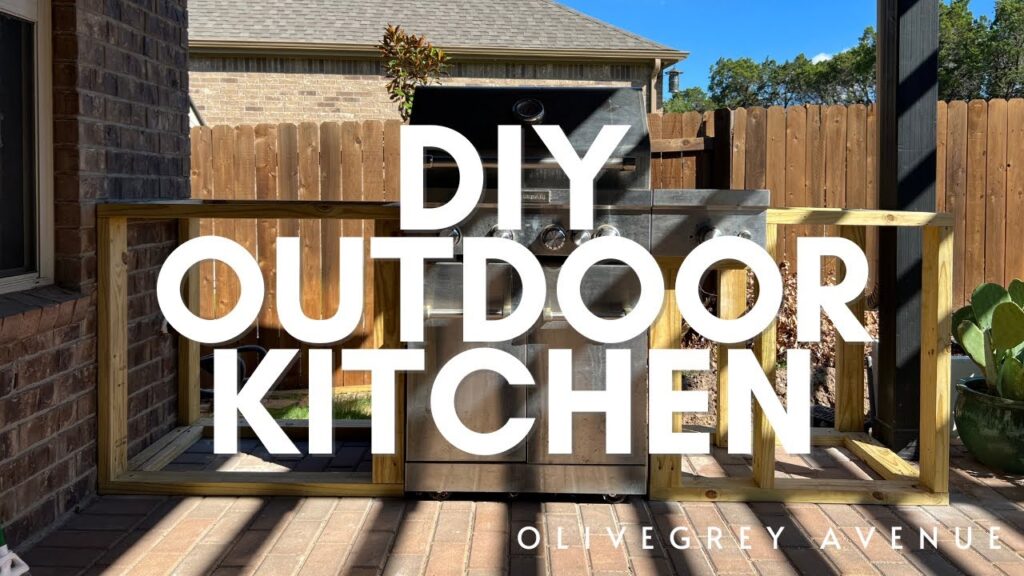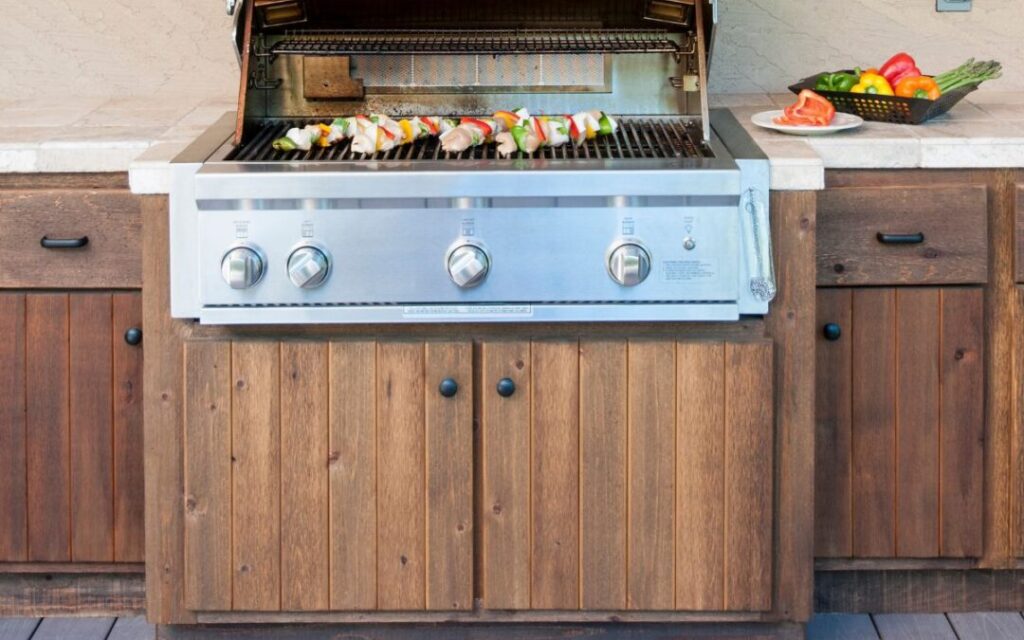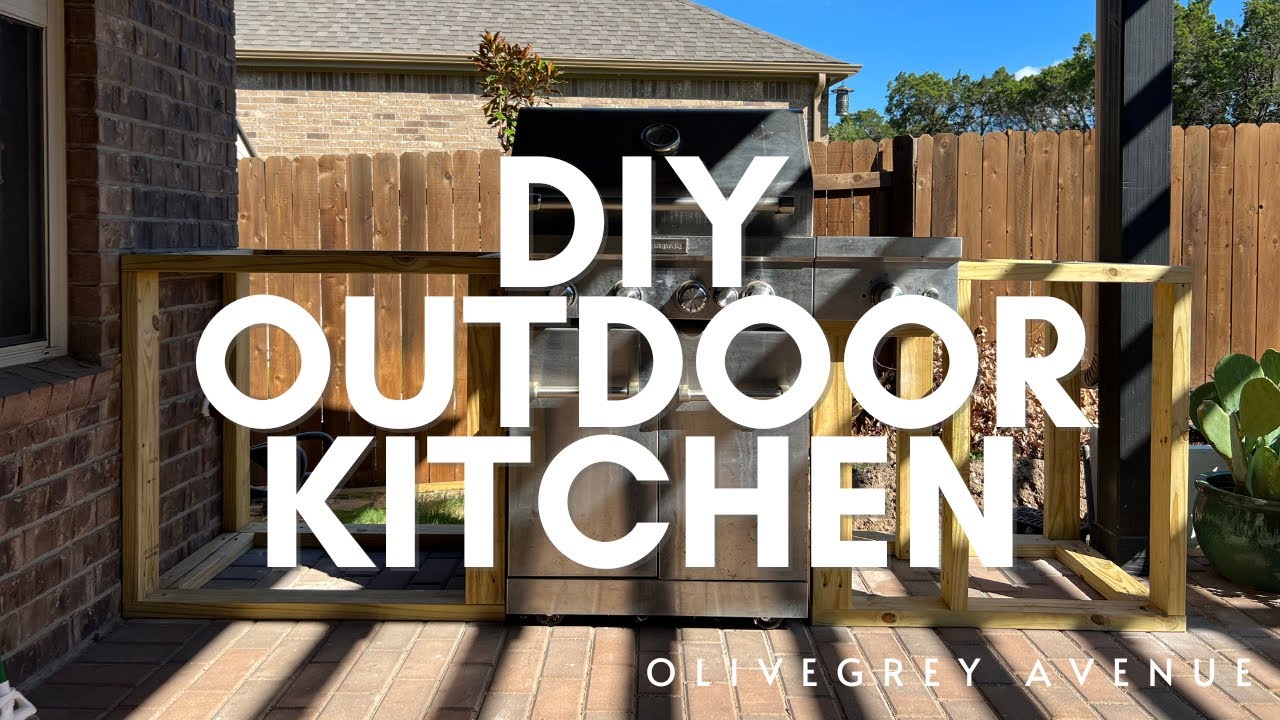Building an outdoor kitchen with wood is the latest project by olivegrey avenue, and they are sharing their journey with you. Using pressure-treated wood and cement board, they are creating a functional and stylish space in their backyard. The video gives you a behind-the-scenes look at the process, from framing the structure to planning the design layout.
With the goal of creating a fire-resistant outdoor kitchen, olivegrey avenue is taking extra precautions to ensure safety. From drilling into concrete to cutting cement board, they are documenting each step in detail. Stay tuned for the next update on tiling the kitchen exterior and subscribe to their channel to see the final transformation.

Benefits of Framing an Outdoor Kitchen with Wood
When it comes to framing an outdoor kitchen with wood, there are numerous benefits to consider. From durability and long-lasting construction to natural and aesthetic appeal, wood framing offers a unique charm to your outdoor space. Not only does wood provide ease of customization, allowing you to tailor the design to your preferences, but it also promotes environmental friendliness by using a renewable and sustainable material.
Choosing the Right Wood for Your Outdoor Kitchen
Selecting the appropriate type of wood for framing your outdoor kitchen is essential to ensure longevity and performance. Pressure-treated wood is ideal for outdoor use, offering protection against moisture and rot. Cedar is a popular choice due to its natural resistance to insects and decay. Redwood is another excellent option known for its beauty and durability. Teak, with its natural oils that repel moisture, is a great choice for outdoor structures exposed to the elements.
Preparation and Planning for Framing with Wood
Before embarking on framing your outdoor kitchen, it is important to prepare and plan meticulously. Start by measuring and marking the area where the kitchen will be located. Creating a design plan will help visualize the layout and structure of the kitchen. Identify potential obstacles such as underground utilities or uneven terrain. Acquire all necessary tools and materials to ensure a smooth construction process.
Building the Frame for Your Outdoor Kitchen
Building the frame for your outdoor kitchen involves several essential steps. Start by installing the base with pressure-treated lumber, ensuring a stable foundation. Use cement board for fireproofing to protect the structure from heat and flames. Create vertical supports for the structure, providing structural integrity. Build a box for the grill, ensuring a secure and functional space for cooking.

Securing and Finishing the Frame
To secure the frame of your outdoor kitchen, consider using pocket screws for added stability and strength. Cut and fit cement board to cover the frame, providing additional protection against fire and heat. Add ventilation and access panels to ensure proper airflow and functionality. Prepare the frame for tiling, ensuring a smooth and even surface for the finishing touches.
Tiling the Exterior of the Outdoor Kitchen
Choosing the right tiles for the exterior of your outdoor kitchen is crucial for both aesthetics and durability. Install tiles that are suitable for outdoor use, such as porcelain or natural stone. Properly install the tiles for a polished and clean look, ensuring they are securely in place. Grout and seal the tiles to protect them from moisture and staining. Add finishing touches such as trim pieces or decorative elements to enhance the overall appearance.

Maintenance and Care for a Wood-Framed Outdoor Kitchen
To ensure the longevity and functionality of your wood-framed outdoor kitchen, regular cleaning and inspection are essential. Re-stain or seal the wood periodically to protect it from weathering and UV damage. Protect the wood from moisture and pests by addressing any issues promptly. Replace any damaged wood or components to maintain the integrity of the structure.
Enhancing Your Outdoor Kitchen with Wood Accents
Enhancing your outdoor kitchen with wood accents can elevate its design and functionality. Consider adding wood shelving or countertops for a natural and cohesive look. Incorporate wood accents in the decor, such as wooden planters or decorative elements. Build a wood-fired pizza oven to enhance your cooking capabilities and create a unique focal point. Create a cozy seating area with wooden furniture for a comfortable and inviting outdoor space.

Cost Considerations for Building an Outdoor Kitchen with Wood
When planning to build an outdoor kitchen with wood framing, it is important to consider the cost implications. Estimate the expenses for materials, including lumber, fasteners, and finishing materials. Compare the cost of different wood types to find an option that fits your budget and desired aesthetic. Factor in labor costs for construction if you plan to hire professional help. Budget for ongoing maintenance and repairs to ensure the longevity and performance of your outdoor kitchen.
Conclusion
In conclusion, framing an outdoor kitchen with wood offers a multitude of benefits, from durability and customization to aesthetic appeal and environmental friendliness. By choosing the right type of wood, preparing and planning carefully, and following a structured construction process, you can create a beautiful and functional outdoor space. Enhance your outdoor kitchen with wood accents to further elevate its design and functionality. Embrace the beauty and functionality of a wood-framed outdoor kitchen, and enjoy creating lasting memories with family and friends in your outdoor oasis.

